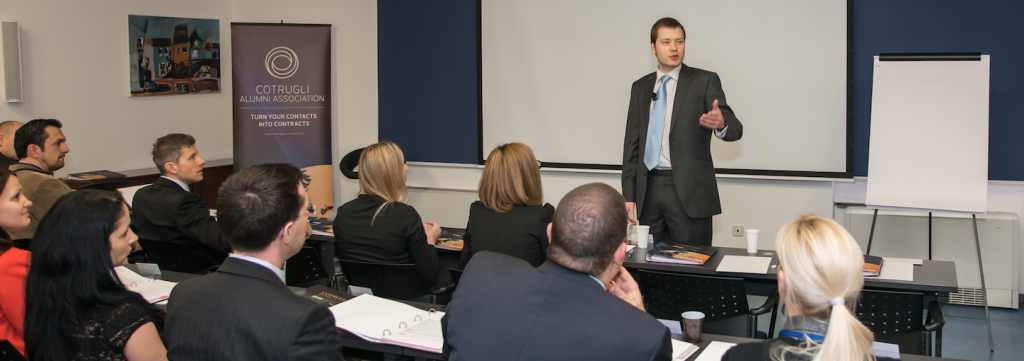Analytics

How can I use data to understand my organisations situation and performance?
From 2006 – 2010 I taught a Quantitative Methods course at ESCP Europe. I enjoyed it immensely and got great feedback from students. Since then I’ve continued to gather material but realise that no-one gets to see it. So I’ve created an online course.
The course should be of use to anyone with an interest in an MBA level education, and I have attempted to supplement my own presentations with links to some exceptional online resources.
The rest of this page contains some further resources and links.
Pre-reading
- Davenport, Thomas H., “Competing on Analytics“, Harvard Business Review, Jan 1st 2006
Prerequisite
- If you want to start at the very beginning then take my Numeracy Skills Bootcamp, which covers Fundamentals of Mathematics, some Practice Tests, and a discussion of Gender Differences & Mathematics. I also suggest my content on Collecting and Presenting Data.
Textbook
I hope you find the online course useful, but I am also a fan of the old fashioned way. The course ties in to the following textbook:
- Curwin, J, and Slater, R., 2013, Quantitative Methods for Business Decisions, Cengage Learning, 7th Edition (££)
It is a very good one: well written, full of examples, and plenty of opportunities to test yourself. You could do a lot worse than simply order it now and then work your way through it.
I’m also intrigued by “Calculus Made Easy“, by Silvanus Thompson. It’s antiquated in format but highly directed toward simplifying concepts and engaging with the reader. Statistics Done Wrong also looks fun.
Pop analytics
I believe that a good way to prepare for a subject is to read a book that is captivating. Something that stimulates your interest and encourages you to dig deeper. There are lots of bestsellers that have attempted to communicate mathematical ideas to the educated layperson. My favourite 6 are these:
- Mlodinow, L., 2008, The Drunkard’s Walk: How Randomness Rules Our Lives, Pantheon (£)
- Taleb, N.N., 2001, Fooled by Randomness, Random House (£)
- Bodanis, D., 2001, E=MC^2, Pan Books (£)
- Sing, S., 1997, Fermat’s Last Theorem, Fourth Estate (£)
- Bernstein, P., 1998, Against the Gods, Wiley (£)
- Wheelan, C., 2013, Naked Statistics, Norton (actually, I’ve not read this one yet, but I’ve heard it’s good) (£)
Other online courses
The University of Bristol Medical school has a lovely Research Methods & Statistics online course. Introductory Statistics, an online course by Andy Field. It is full of some excellent tutorials that are presented with a unique style. The New York Times have made their course on data skills publicly available, there’s a link here. A thorough course designed for incoming PhD students is the Princeton Sociology Summer Methods Camp 2019. Here is the free course MITx Probability.
I also love this course: Calling Bullshit in the Age of Big Data.
There are also lots of proper online courses to choose from. The only one I have direct experience of is this:
- Quantitative Methods Online Course, Harvard Business School (£££)
UCLA have a list of publicly accessible courses on a range of software and concepts.
If you really need to develop your QM skills then I would recommend you follow the HBS one instead of mine. However I found it pretty dull and failed to complete it. I’m hoping that by providing a mixture of content you will find mine more enjoyable.
Other resources
Instrumental variables: this tweet and these lecture notes
False positives and coronavirus.
Examples of bitemporal charts (especially good on economic forecasts)
Software and misc.
Daniel Kunin has a wonderful website called “Seeing Theory“, which allows users to visualise basic concepts in statistics. I’ve integrated links into the course below.
Software: http://datasplash.com/
Handouts
APPENDIX: Contoversies
I believe that the best way to internalise the key concepts in this course is to conduct a replication exercise. These have become increasingly common as ways to apply the concepts covered, and test a students knowledge retention. To be honest though I am yet to find any really good examples of statistical tests that companies have utilised, and for which the underlying data set is available.
In their textbook, “Modern Principles: Macroeconomics”, Tyler Cowen and Alex Tabarrok present a good exercise to replicate a Solow Model. My (flawed) attempt to combine two of their problem sets is here:
- Solow 1502.pdf (email me for discussion)
Whilst I continue to look for potential replications, one option is to focus on some controversial statistical debates. These are also good ways to go deeper into the theory, and fully appreciate the link between theory and practice.
- Crime and abortion
- “Crossing continents” BBC Radio 4, December 21st 2006
- Freakonomics video
- Donohue, J.J., and Levitt, S., (2001) “The Impact of Legalised Abortion on Crime”. Quarterly Journal of Economics, Vol. CXVI, Issue 2., pp.379-420
- “Oops-onomics” The Economist, December 1st 2005
- Foote, C.L., and Goetz, C.F., “Testing Economic Hypotheses with State-Level Data: A comment on Donohue and Levitt (2001)”. Federal Reserve Bank of Boston working paper. November 2005
- Levitt, S., “Abortion and crime: who should you believe?” Freakonomics Blog, 15th May 2005
- Sudden Infant Death syndrome
- see Mlodinow, 2008, p118-119
- How Juries are Fooled by Statistics, Peter Donnelly, Ted Global 2005
- Roy Meadow Wikipedia page
- Breast cancer
- “Dodgy numbers“, The Remittance Man, April 14th 2014
- Sovereign debt crises
- “The 90% Question” The Economist, April 20th 2013
- MMR
- Other links
After party
You should now be a savvy consumer of statistical analysis and passionate about good data management. I recommend that you treat yourself to the following tome:
- Gleick, J., 2012 [2011], The Information, Fourth Estate (£)
Thank you for visiting.
Last updated: June 2019

